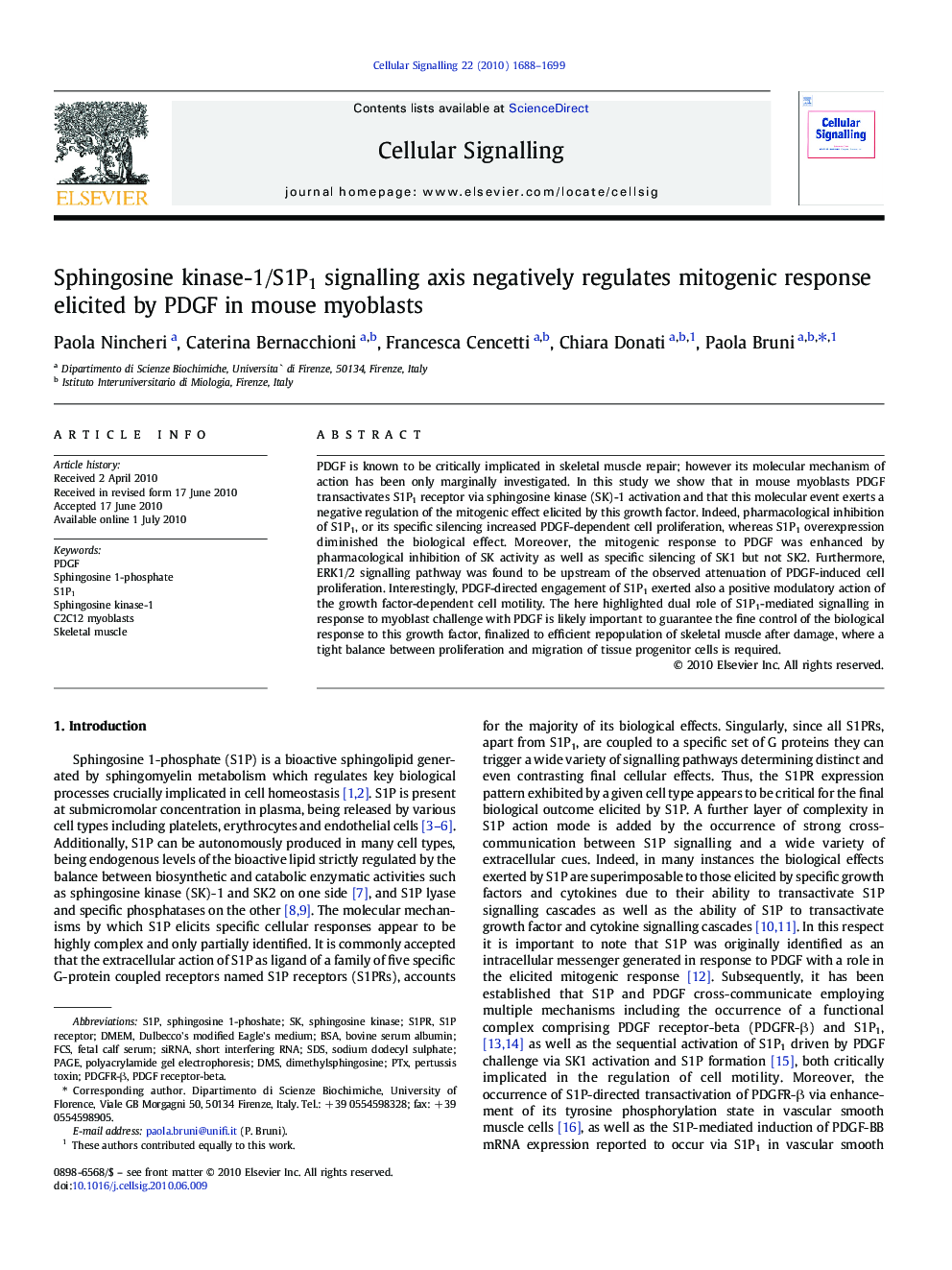| Article ID | Journal | Published Year | Pages | File Type |
|---|---|---|---|---|
| 1964797 | Cellular Signalling | 2010 | 12 Pages |
Abstract
PDGF is known to be critically implicated in skeletal muscle repair; however its molecular mechanism of action has been only marginally investigated. In this study we show that in mouse myoblasts PDGF transactivates S1P1 receptor via sphingosine kinase (SK)-1 activation and that this molecular event exerts a negative regulation of the mitogenic effect elicited by this growth factor. Indeed, pharmacological inhibition of S1P1, or its specific silencing increased PDGF-dependent cell proliferation, whereas S1P1 overexpression diminished the biological effect. Moreover, the mitogenic response to PDGF was enhanced by pharmacological inhibition of SK activity as well as specific silencing of SK1 but not SK2. Furthermore, ERK1/2 signalling pathway was found to be upstream of the observed attenuation of PDGF-induced cell proliferation. Interestingly, PDGF-directed engagement of S1P1 exerted also a positive modulatory action of the growth factor-dependent cell motility. The here highlighted dual role of S1P1-mediated signalling in response to myoblast challenge with PDGF is likely important to guarantee the fine control of the biological response to this growth factor, finalized to efficient repopulation of skeletal muscle after damage, where a tight balance between proliferation and migration of tissue progenitor cells is required.
Keywords
DMSPDGFS1PdimethylsphingosinePTXS1PRFCSPAGEPDGFR-βS1P1SDSDMEMBSADulbecco's modified Eagle's mediumshort interfering RNAsiRNAbovine serum albuminSphingosine kinaseSphingosine kinase-1sphingosine 1-phosphatepolyacrylamide gel electrophoresissodium dodecyl sulphatefetal calf serumpertussis toxinSkeletal muscleC2C12 myoblastsS1P receptor
Related Topics
Life Sciences
Biochemistry, Genetics and Molecular Biology
Biochemistry
Authors
Paola Nincheri, Caterina Bernacchioni, Francesca Cencetti, Chiara Donati, Paola Bruni,
